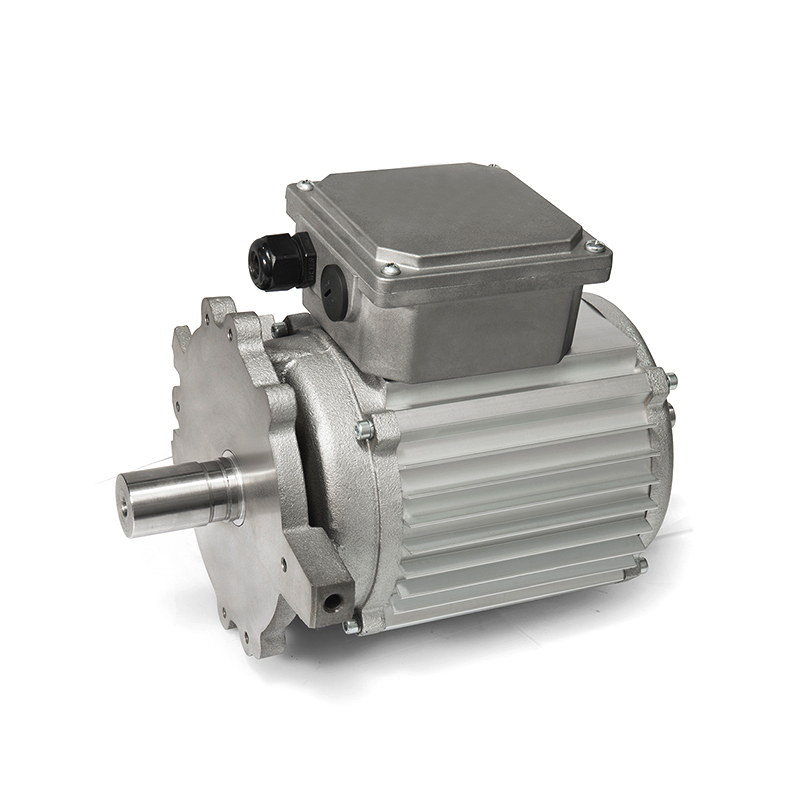Vacuum Pump Motor: Key Role and Application of Vacuum Pump Motor
Vacuum Pump Motor is one of the indispensable core components in vacuum technology and is widely used in industry, medical treatment, laboratory and other fields. As the driving device of the vacuum pump, the vacuum pump motor is responsible for converting electrical energy into mechanical energy, thereby helping the pump system to extract and transport gas.
The vacuum pump motor is an electric motor that drives the vacuum pump to operate, and its main function is to provide power for the vacuum pump. The vacuum pump extracts air or other gases from a closed space through different working principles (such as rotary vane, screw or diaphragm, etc.) to form a vacuum environment. The vacuum pump motor drives the mechanical movement of the pump body through electricity, prompting the piston or impeller and other components in the pump to move, completing the gas suction and discharge process.
The working principle of the vacuum pump motor is similar to that of other motors. It generates rotational motion through current excitation, thereby driving the internal components of the vacuum pump. In practical applications, the vacuum pump motor is usually linked with the key components of the vacuum pump such as the impeller and piston through belts or direct connections. When the motor starts, it converts electrical energy into mechanical energy, causing the pump body to start extracting gas and form a negative pressure environment.
Specific to different types of vacuum pumps, the motors they are equipped with will also be different. For example, rotary vane vacuum pumps are usually equipped with more efficient and stable motors to meet the needs of continuous work; while diaphragm or screw vacuum pumps choose suitable motor power and speed according to actual needs to ensure the working efficiency and service life of the pump body.
In industrial production, vacuum pump motors are often used in various types of vacuum equipment, such as packaging equipment, vacuum filling machines, etc. Its main function is to provide a stable vacuum environment for the production line to ensure product quality and production efficiency. For example, in food packaging, vacuum pumps can extract air from packaging bags to extend the shelf life of food.

Vacuum pump motors are also widely used in medical equipment, such as suction equipment, ventilators, anesthesia machines, etc. By effectively extracting gas, vacuum pumps can help medical devices perform precise operations, such as suctioning liquids or gases in surgery, providing a sterile environment, etc.
In the laboratory, vacuum pump motors are used in various scientific experiments, such as vacuum evaporation, vacuum filtration, molecular pump systems, etc. It can help experimenters create an ideal vacuum environment, control the pressure changes during the experiment, and ensure the accuracy and repeatability of the experimental results.
In the automotive industry, vacuum pump motors are used for exhaust and pressure regulation of in-vehicle systems, especially in braking systems, air conditioning systems, etc. Vacuum pump motors can provide the necessary negative pressure support for the car to ensure the normal operation of various equipment in the car.
When selecting a vacuum pump motor, you need to consider multiple factors to ensure its compatibility with the pump body and performance requirements:
The power of the vacuum pump directly affects its performance and efficiency. When selecting, you need to reasonably select the power of the motor according to the type of pump and application requirements. Too little power may cause the vacuum pump to fail to work properly, and too much power may cause energy waste.
The speed and efficiency of the vacuum pump motor are important indicators that affect the working effect. High-speed motors can extract gas faster, but may also increase noise and energy consumption. Motors with higher efficiency can effectively reduce energy consumption and are more environmentally friendly.
Since vacuum pump motors are mostly used in industrial and laboratory environments, their long-term stability and durability are essential. When choosing, you need to consider the quality, material and ability of the motor to adapt to the working environment. High-quality motors can withstand long-term high-load operation and reduce maintenance costs.
The vacuum pump motor may generate a certain amount of noise during operation, especially in industrial applications, where long-term noise will affect the comfort of the working environment. Therefore, choosing a low-noise motor is very important to ensure a quiet working environment.
In order to ensure the efficient operation of the vacuum pump motor, regular maintenance and care are essential. First, the electrical connection should be checked regularly to ensure a stable supply of current. Secondly, the mechanical parts inside the motor should be kept lubricated to prevent wear caused by friction. Finally, dust and dirt around the motor need to be cleaned regularly to ensure good ventilation and avoid overheating.
As the power source in the vacuum pump system, the vacuum pump motor plays a vital role. Whether in industrial production, medical field, or laboratory research, it provides stable power support for various applications. When choosing a suitable vacuum pump motor, users should make precise choices based on actual needs, environmental conditions and equipment requirements to ensure efficient operation and long life of the system. Through scientific and reasonable care and maintenance, vacuum pump motors can provide reliable support for various industries, helping technological innovation and improving product quality.
-
Feedback
Hotline:0086-15869193920
Time:0:00 - 24:00


 English
English Deutsch
Deutsch italiano
italiano 中文简体
中文简体












